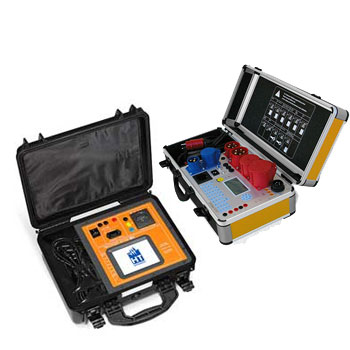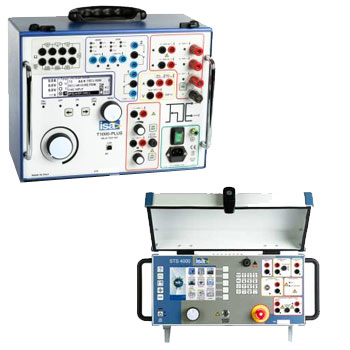
Sterile production processes are the backbone of the pharmaceutical industry. Every component that comes into contact with the product must meet the highest hygienic standards – even the smallest contamination or residue can jeopardize the safety of entire batches. While much attention is paid to obvious elements such as piping or valves, less visible – yet equally critical – are the interfaces, such as sensors.
Pressure measurement plays a central role in aseptic processes: it monitors fill levels, controls filtration steps, manages dosing, and ensures that physical process parameters are maintained precisely. But what happens when hygiene risks are overlooked in exactly this area – for example, due to dead spaces or contamination-prone fill fluids?
In many pressure sensors, dead spaces can accumulate, or they operate using fill fluids such as silicone oil. These designs often pose a risk of microbial contamination, complicate cleaning, and make CIP/SIP validation more difficult – all of which can threaten product quality and lead to production downtime.
This article demonstrates how modern inline pressure transmitters like the WIKA DMSU22SA Inline Process Transmitter Hygienic Design can effectively eliminate such risks – and ensure that sterile processes truly remain sterile.
→ The problem in detail
What are dead spaces and fill fluids?
In process-contacting components such as pressure sensors, so-called dead spaces can form due to design. These are areas that are not or only insufficiently flushed, where product residues, particles, or microorganisms can accumulate. These zones are often difficult to access for cleaning or sterilization media.
Equally problematic: Many conventional pressure sensors use a fill fluid, usually silicone oil, to transmit pressure from the process medium to the measuring cell. This liquid is located between the process diaphragm and the sensor cell.
Example from practice:
A pressure sensor with a flush diaphragm is filled with a few milliliters of silicone oil. If a leak or diaphragm rupture occurs, the oil can enter the pharmaceutical product – with serious consequences for quality and safety.
Why residues in dead spaces and fill fluids are problematic:
-
Biofilm formation: Dead spaces promote the formation of biofilms, which are difficult to remove during cleaning.
-
Product residues: Deposits can remain between batches and lead to cross-contamination.
-
Chemical instability: Fill fluids such as silicone oil may react with process media or decompose under high temperatures.
| Typical Weak Point | Risk | Consequence |
|---|---|---|
| Dead space at sensor connection | Residues, biofilm | Hygiene risk, difficult to clean |
| Silicone oil as fill fluid | Leakage, chemical reaction | Product contamination, sensor failure |
| Insufficient surface drainage | Residual media after process ends | Validation issues, risk of product recall |
Risks for the pharmaceutical process
The use of sensors with dead-space-prone designs or fill fluids is associated with a number of process-critical risks:
1. Microbial contamination
-
Dead spaces promote the growth of microorganisms.
-
Undetected biofilms can contaminate entire batches.
2. Difficult cleanability
-
Cleaning media reach dead spaces only incompletely.
-
Fill fluids make complete removal of potential residues more difficult.
3. Validation issues with CIP/SIP
-
CIP and SIP cycles must be validated. Sensors with problematic dead volumes or temperature-sensitive fill fluids make documented cleaning significantly more difficult.
-
Higher validation costs and additional effort in quality management.
4. Recall or batch risks
-
A defective or contaminated sensor can lead to total batch loss.
-
In the worst case: product recalls, reputational damage, liability claims.
Dead spaces and fill fluids may appear to be minor technical details – in reality, they are primary causes of microbiological and regulatory risks in pharmaceutical pressure measurement. Relying on conventional sensor technology here not only risks quality loss but also regulatory and financial consequences.
→ Why conventional sensors reach their limits
Despite increasing hygiene requirements, conventional pressure sensors are still widely used in pharmaceutical plants – often out of habit or due to lower initial costs. However, this seemingly established technology reveals significant weaknesses in hygiene-critical processes.
Design of conventional pressure sensors
Conventional pressure sensors typically consist of a stainless steel housing with a flush process diaphragm. To transmit the process pressure to the measuring cell, a fill fluid such as silicone oil or paraffin oil is used. This fluid is enclosed between the diaphragm and the actual sensor element.
The weak points here include:
-
Filling ports, seals or cavities create unwanted dead zones.
-
The fluid used may become chemically unstable or degas at high temperatures (SIP).
-
If a diaphragm rupture occurs, the fill fluid can enter the product.
Complexity in hygienic design
A sensor used in hygienic applications must not only be pressure-resistant and accurate – it must also:
-
be gap-free and turbulence-free in design,
-
be fully cleanable and sterilizable (CIP/SIP),
-
and be validatable and documentable.
Conventional sensors often fail to meet at least one of these requirements:
-
Seals are difficult to access.
-
Sensors are only partially validatable.
-
Certain dead spaces cannot be fully cleaned.
Conclusion: The hygienic design of conventional sensor types is usually a compromise between functionality and cleanability – a compromise that is risky in pharmaceutical applications.
Maintenance, replacement and risk assessment
The seemingly low purchase price of conventional sensors quickly proves misleading due to their high maintenance requirements and the operational risks they involve:
| Aspect | Conventional Sensor | Consequence |
|---|---|---|
| Replacement interval | Shortened service life under SIP stress | Frequent downtimes, spare part costs |
| Risk analysis (GMP) | Difficult to assess due to internal fill fluids | Increased documentation effort |
| Diaphragm leakage | Often only detected after contamination | Loss of quality, batch rejection |
| Cleaning (CIP/SIP) | Limited due to complex geometry | Risk of residue, validation problems |
Conventional pressure sensors with fill fluids and potential dead zones do not offer a sustainable solution for the demands of modern pharmaceutical production. Their design reaches its limits where cleanability, product safety, and validation must be fulfilled without compromise.
→ The solution: DMSU22SA with dead-space-free, dry inline technology
With the DMSU22SA, WIKA offers a pressure transmitter specifically developed for sterile applications, consistently designed for hygienic safety and process stability. Two construction features fundamentally distinguish it from conventional sensors:
→ a dead-space-free inline design
→ a dry measuring cell without fill fluid
Dead-space-free design
The core of the DMSU22SA is its flow-optimized sensor housing, which is completely inline integrated into the process pipe. There are no protruding sensor surfaces, no dead spaces, no gaps – and therefore no places where product residues could accumulate.
Key features:
-
Fully integrated into the process pipe (“inline”)
-
Sensor pipe without corners, edges, or dead zones
-
CIP- and SIP-capable up to 150 °C
-
EHEDG-compliant, ASME BPE and 3-A certified
This construction meets the highest hygienic design requirements and enables complete cleaning and sterilization – even with demanding media or short cleaning cycles.
Practical benefit: No residues → no contamination → easy validation
Dry-operating pressure sensor
Unlike traditional pressure sensors, the DMSU22SA requires no fill fluid such as silicone oil for pressure transmission. Instead, it uses a dry, metallic sensor element that is directly exposed to process pressure – a unique feature in hygienic applications.
Advantages of the dry design:
-
No fill fluid → no risk of leakage
-
No media contact in the event of damage
-
No chemical interaction or thermal degradation
-
No requalification required after each CIP/SIP cycle
Especially for sensitive pharmaceutical products – such as protein solutions, vaccines, or infusion carriers – the absence of foreign substances in the process is a significant safety gain.
Comparison: Conventional Sensor vs. DMSU22SA
| Criterion | Conventional Sensor | DMSU22SA Inline Transmitter |
|---|---|---|
| Fill fluid | Yes (e.g. silicone oil) | No |
| Dead-space-free | Limited | Yes (100% inline, no dead zones) |
| Hygiene standards | Partially | EHEDG, 3-A, ASME BPE |
| Cleaning & sterilization | Limited | Fully CIP/SIP-capable up to 150 °C |
| Validatability | Complex, potentially problematic | Simple, reliable |
| Risk in case of diaphragm rupture | Contamination by oil | No contact with process media |
With its dead-space-free, dry inline technology, the DMSU22SA sets new hygiene standards in pressure measurement. The design completely eliminates critical weak points such as fill fluids or hard-to-clean zones – making the sensor ideal for use in GMP, FDA and audit-relevant pharmaceutical applications.
→ Benefits for the pharmaceutical industry
The use of the DMSU22SA inline pressure transmitter offers numerous concrete benefits for pharmaceutical manufacturers – not only in terms of hygiene, but also in efficiency, safety, and regulatory compliance.
✅ Product safety
✅ Process stability
✅ Audit readiness
✅ Cost reduction through less downtime and maintenance
1. Maximum product safety
Thanks to its combination of dead-space-free design and dry sensor technology, the DMSU22SA reliably eliminates two of the most common contamination risks:
- No silicone oil leakage
- No product residues in dead zones
- No uncontrolled foreign substances in case of diaphragm failure
Result: Maximum protection for sensitive pharmaceutical substances – from the active ingredient to carrier solution to final formulation.
2. Simplified cleaning and validation processes
Thanks to full CIP/SIP compatibility up to 150 °C, the DMSU22SA can be easily integrated into automated cleaning and sterilization procedures. No validation is required for internal fill fluids or hard-to-reach dead spaces.
Operational advantages:
- Faster cleaning cycles
- Reduced consumption of cleaning and sterilization agents
- Less documentation effort for process validation
Conclusion: More safety with less effort – especially valuable in regulated GMP environments.
3. GMP compliance and audit readiness
The DMSU22SA meets all major pharmaceutical hygiene standards:
- EHEDG certified
- 3-A Sanitary Standard
- ASME BPE compliant
Additionally, the integrated leak detection via double-tube system facilitates traceable documentation of process states – a key factor during GMP audits.
Benefits for QA and validation: Clearly defined conditions, simple qualification, high transparency for auditors and customers.
4. Reduced downtime
Failures of conventional sensors – due to diaphragm rupture, undetected leaks or cleaning failures – often result in unplanned production stops.
The DMSU22SA actively prevents these risks:
- Early fault detection (e.g. diaphragm rupture)
- Low-maintenance design without fill fluids
- Long-lasting even under frequent SIP or autoclaving
| Typical risk | Conventional sensor | DMSU22SA |
|---|---|---|
| Failure due to fill fluid | Possible | Excluded |
| Cleaning difficult to validate | Common | Validated and documented |
| Cleaning interruptions | Likely | Minimized by design |
| Audit-relevant traceability | Laborious | Automated via sensor status |
Conclusion: More uptime, less maintenance, higher system efficiency.
→ Conclusion
In pharmaceutical production, it's not just the formulation that determines the product quality – every single detail in the process chain matters. Components like pressure sensors are often underestimated. But dead spaces, fill fluids, limited temperature resistance, or lack of membrane monitoring pose significant risks: to product purity, process reliability, and ultimately the regulatory approval of the entire production process.
With the DMSU22SA Inline Process Transmitter, WIKA offers a solution that directly addresses – and eliminates – these vulnerabilities:
- No dead spaces → no residues
- No fill fluids → no contamination risks
- High-temperature resistant up to 150 °C → ideal for SIP
- Integrated leak detection → maximum safety
Anyone investing in sterile processes today should rely on uncompromising hygienic design – not outdated sensor technology.
The DMSU22SA combines product safety, cleanability, GMP compliance, and process stability in a compact, low-maintenance component. An investment that pays off – not just in terms of compliance, but economically as well.












































































































































































